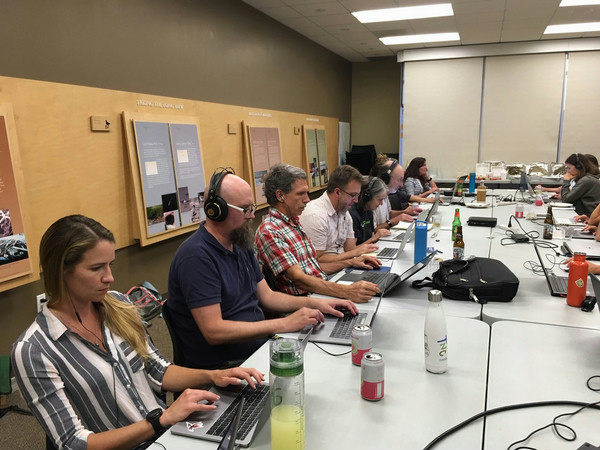
Soundscapes to Landscapes (S2L)
Monitor bird diversity across Sonoma County, CA using sound recorders
- Ongoing
More Information
Soundscapes to Landscapes is a science-based project that seeks to advance animal biodiversity monitoring from the next generation of Earth-observing satellites. The project is currently focused on mapping bird diversity across Sonoma County, but could expand to other animal groups and landscapes in the future.
Teams of volunteer citizen scientists place portable sound recorders out in a variety of habitats including natural woodlands, grasslands, agricultural areas and urban areas. After 3-4 days, teams retrieve the recorders and upload the “soundscape” recordings to a cloud-based computer system. Expert birders who recognize calls select a template with a distinct bird call to obtain potential matches for that species across the recordings. Clips that are identified by the computer as potential matches to the target bird call are then reviewed by citizen scientists who “validate” the clips as being a true match (the species is present) or a false match (the species is not present). These validated clips will then be used as training data to create a high-accuracy computer algorithm which will identify the presence of each target bird species in all recordings from field sites.
Using the bird species data obtained from each site, the science team will use statistical modeling and satellite data to make countywide maps of bird diversity. The project tests the accuracy of models that include several cutting-edge remote sensors. One sensor, called Light Detection and Ranging (LIDAR) uses pulses of light to measure the physical structure of vegetation, such as heights of trees and understory plants. Another technology being tested is an “imaging spectrometer” that provides images from hundreds of light measurements, including wavelengths that our eyes cannot observe. These images can detect canopy chemistry, such as water and nitrogen content, that can be linked to ecosystem productivity and habitat quality.
Ticket Required: No
Minimum Age: 13
Languages: English
